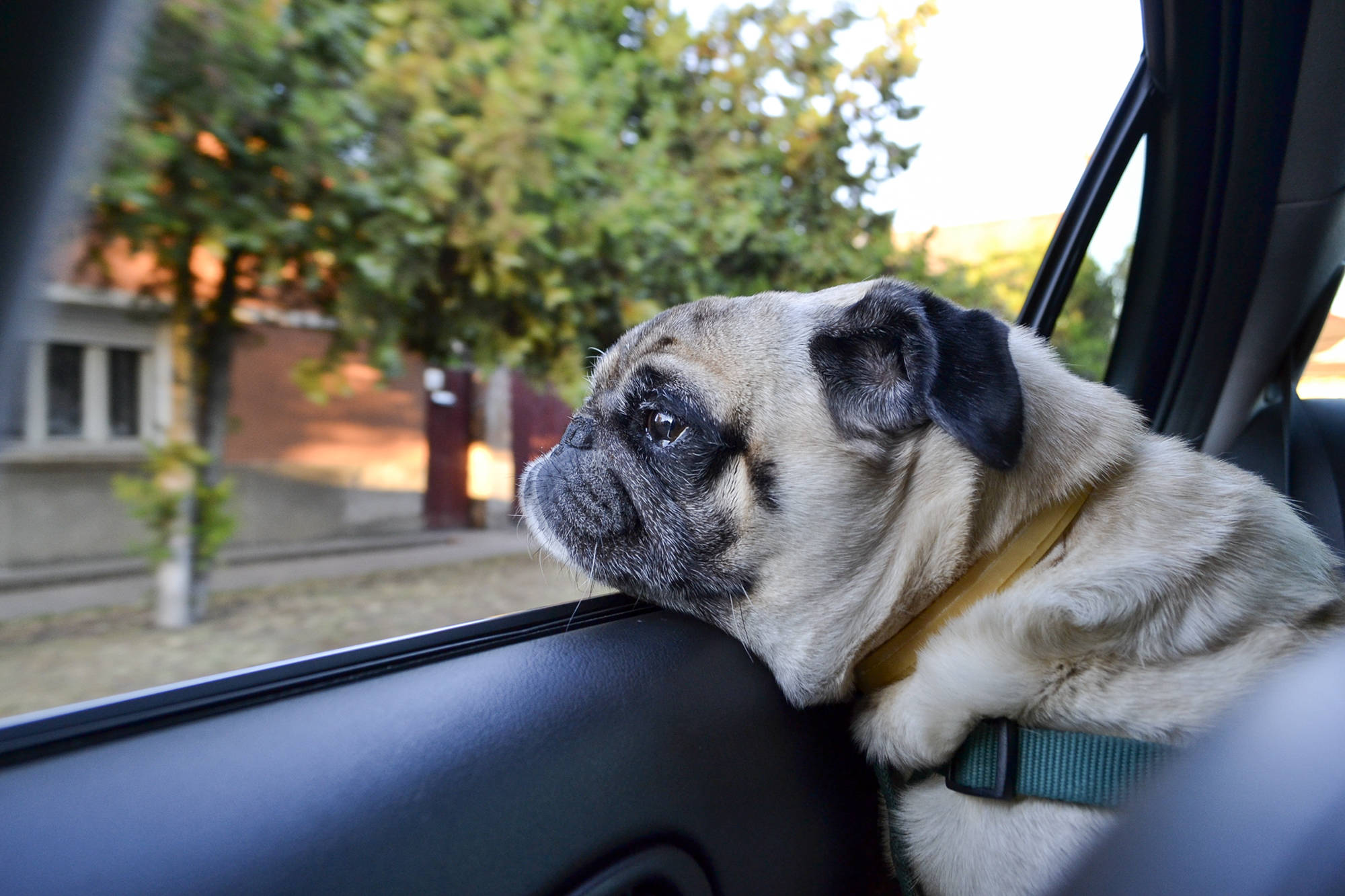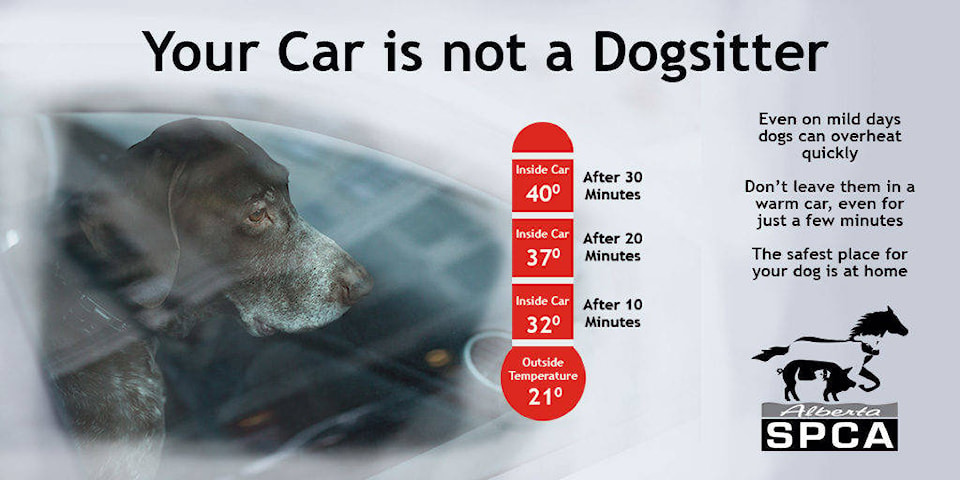With hot weather blanketing itself over central Alberta, it is important to remember that your vehicle is not a dog-sitter.
Veterinarian Dr. Sandy Jameson says on a 32 C day, it only takes 10 minutes to reach a life-threatening 43 C inside a vehicle.
She referred to a study by San Francisco State University that showed the temperature in a vehicle can rise rapidly.
“They started at 21 C, so a pretty nice day, and after 30 minutes, it became 40 C in that vehicle, so not very long,” said Jameson.
“It doesn’t have to be very hot outside, or what I wouldn’t consider super hot outside, for it to become dangerous for your pet or anybody to be left in a vehicle.”
The study also found partially rolling down the windows did not make a significant change in the rapid increase in temperature.
“If we’re looking at a day like Thursday, we’re looking at 32 C. I think no pet should be left in the vehicle at any point of time,” said Jameson, who works at the Sylvan Lake Veterinary Clinic.
“If it’s more temperate, like 21 C, you’re probably OK with 10 minutes, but honestly, I would want to risk it.”
She said some dog breeds are more susceptible to the heat. Dogs with squished-in faces, such as pugs, are at a higher risk.
These breeds are compromised when it comes to evaporative heat loss, because they have less surface area in their mouth and nasal passages for panting, says Jameson.
Underlying diseases or conditions, such as heart disease or obesity, also play a role in a pet’s ability to temperature regulate.
Milder signs of heatstroke in dogs are excessive panting, restlessness and looking a bit stressed, Jameson said.
As the condition progresses, the dog could start to drool, with the saliva coming out of its nose and mouth; then, it could become disoriented.
In severe cases, they can experience seizures or become non-responsive.
“Looking at their gums as well: when they become really bright red or blue/purplish, that can be a sign that they don’t have adequate oxygen,” said Jameson.
If your dog is showing any of these symptoms, try to cool it down by moving it to a cool environment, placing a wet towel in its groin, or under the armpit region, or using a fan to blow air across the pet.
Jameson says cool tap water is best, as ice will constrict the blood vessels in the skin and reduce the conductive heat loss.
“Putting cool water on their paws is pretty helpful, too,” she said. “Dog’s don’t hardly sweat at all, but they will through the pads of their feet, so putting cold water on their feet could be quite helpful.”

